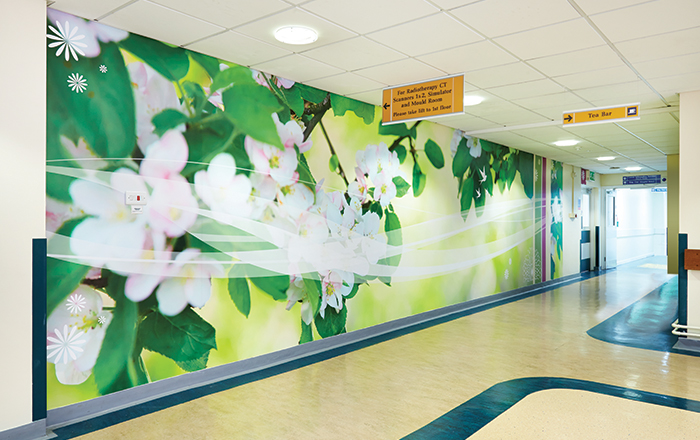
How many jobs do you do in a day? If you’re a nurse, the chances are it’s more than one. It’s likely you’re also a concierge, tour guide, customer services rep and an administrator. No wonder your shifts feel long! There’s also another job that you do that you might not have thought about; you’re probably a decorator too.
While you’re not quite Laurence Llewellyn Bowen, that poster that you put up reminding visitors to use the hand sanitiser still counts as decoration. Hardly the most exciting of things to decorate the ward with though, is it? Even so, it’s worth thinking about the effect that what you put on the walls has on the environment, your patients and you.
What is unintentional decoration?
When you think of decoration, you probably think of visual elements that are part of a wider design of a space. This is intentional decoration and something we often incorporate as part of our ward transformations.
On the other hand, unintentional decoration is anything else that’s placed on walls or doors without any real consideration of how it affects the place that it’s in. It’s something you’ll often hear us call by another name: wall clutter.
Where does wall clutter come from?
One of the biggest culprits for causing wall clutter is actually (wait for it) hospital management! How many times have you received requests to put up signs and notices only to never be told when you can take them down again? Over time, you end up with signs of varying ages clinging to the walls and forming quite the gallery.
At first glance, it might just seem a little untidy to look at, but these randomly placed notices and posters can actually act as visual stressors for everyone who uses the ward.
What effect does this have on people who use the ward?
For patients, a multitude of signs adorning the walls, sometimes conveying worrying warnings, can end up leaving them unable to relax or concentrate on getting better and less confident about their treatment overall. In turn, that means they can become more resistant to the care that staff are trying to provide for them, making nurses’ jobs harder.
What can we do to make it better?
When we redesign wards, we always try to reduce visual stressors caused by unintentional design. One of the ways we do this is by using WallGlamour to introduce a focused place for signs and notices. As well as preventing an epidemic of A4 print outs taking over whole walls at a time, it also encourages ward staff to review what actually needs to be there when new signposting requests come down from higher up. We also make important considerations around colour psychology and carefully select the images we use so that we create the right atmosphere for everyone who uses the ward.
By using intentional decoration like WallGlamour, patients are provided with a calmer, more considered environment where they can feel confident about their treatment. At the same time, unintentional decoration, which sometimes can’t be avoided, can be given its own dedicated space where it’s less likely to act as a visual stressor for both patients or those who are working hard to help them get better.
We know that when you’re a nurse, you’re not just a nurse. You wear a lot of different hats and, even though your decorating hat might not be the first that comes to mind, it’s one that can make all the others a little bit easier to wear, even if you’re wearing them all at the same time!
If you want to know more about how you can make your ward work better for staff, patients and visitors through intentional decoration, sign up for our newsletter and we’ll send inspiration straight to your inbox.
